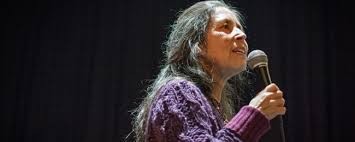Language and pedagogy
Practical strategies for a multilingual classroom

Those of us who teach know that the various cultural debates around multilingualism worm their ways into our classrooms. At the K-12 level especially, bi- and multilingual education have specific consequences for funding: the fear is that English Language Learners (ELLs) will lower schools’ test scores, resulting in a punitive drop in already meager funding. In higher ed, many universities are getting rid of foreign language requirements (although they’re still promoting study abroad as a great resumé-booster and as the ticket to success in an increasingly globalized economy). At all levels of education, of course, there are many students who are second-language (or third- or fourth-language) speakers, and students speak varieties of English other than the ones that are privileged in traditional education. Many of these students want to improve their use of Standard English, but that doesn't mean they should be made to feel as though there is an "English Only" sign on the classroom door.
It may seem a bit beside the point to bring these educational and cultural debates into a conversation about poetry, but I think that the relative openness to multilingualism that is readily visible in so many poems can serve as a helpful corrective to the transparent and univocal conception of language that reigns supreme in most educational settings. I often teach multilingual texts such as Craig Santos Perez's from unincorporated territory series, James Thomas Stevens's "Tokinish," and Gloria Anzaldúa's Borderlands/La Frontera: The New Mestiza. I also teach poetry by Louise Bennett, Linton Kwesi Johnson, Kamau Brathwaite, and other writers who experiment with non-standard Englishes, and I have found that discussing these works brings up some very powerful ideas about where knowledge comes from and how it is communicated. Because these texts incorporate languages that few to none of my students speak, they often encourage the students I don't hear from as often to contribute to the discussion. Finally, the ELL students see that the other students are struggling in a position similar to theirs, and the barriers to their participation begin to drop.
I was recently reading a brilliant article by my friend and colleague Janet Neigh that describes how multilingual poetry can be used in women’s and gender studies classrooms in particular — but I think that Neigh’s claims could be extended to any type of classroom that teaches reading, writing, or other forms of cultural literacy. Here is Neigh’s abstract:
“In the past thirty years, great strides have been made to diversify the curriculum in women’s and gender studies in terms of race, class, nationality, gender, and sexuality; however, linguistic diversity, perhaps not surprisingly, remains an inherent stumbling block. What Adrienne Rich famously characterized in the 1970s as ‘the dream of a common language,’ unfortunately defaults to English in feminist classrooms throughout North America. This article argues that women’s and gender studies, as a discipline, needs to reflects more fully on the limitations of classroom discussions conducted in English and to develop more instructional strategies to engage multilingual voices. To this end, the article suggests that lessons based on multilingual and vernacular poetry can be used to disrupt the desires for a transparent univocal language, and to transform the widespread perception that multilingualism fosters disengagement and miscommunication. A key aspect of the approach involves using vernacular English poems to introduce students to the borderlands between different languages. By focusing on classroom strategies, the article demonstrates the value of small-scale acts, in addition to broader curricular changes for transforming systems of oppression.”
One of the things that I most appreciated about Neigh’s article is that in addition to her wonderful points about teaching the work of Dunya Mikhail, Theresa Hak Kyung Cha, Cecilia Vicuña, Louise Halfe, and Louise Bennett, she provides teaching strategies for multilingual and vernacular poetry. Some of the specific activities she describes include a freewrite in which students must write in their second-most fluent language for ten minutes; a freewrite in which students describe the moment when they realized that not everyone speaks the same language; an essay paragraph on any topic that involves code-switching; a homework assignment in which students create a dictionary entry for a non-English word in a multilingual poem; a homework assignment in which students document the frequency and purpose of code-switching in their everyday lives. These practical strategies give us ways of bringing multilingualism into the classroom that step aside of entrenched debates over the relative value of different languages and enable students to use the knowledge that their different linguistic skills confer. These activities also allow us to read a broad variety of texts in acknowledgement of the limitations that our different linguistic skills confer. And, I think, they help our students to write some very interesting poems, too.
Janet Neigh’s article is titled “Dreams of Uncommon Languages: Transnational Feminist Pedagogy and Multilingual Poetics.” It was published in the journal Feminist Formations, vol. 26 no. 1, 2014.
Languages